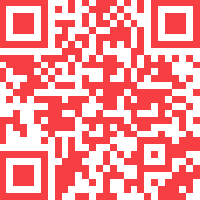Your Replies
-
August 4, 2021 at 5:03 pm
“My incisors began tilting shortly after my orthodontic treatment. What should I do?” asked a young lady sitting in the dental chair. Thanks to my appreciation of bone biology, I was able to help explain the interplay between orthodontic tooth movement and the health of her periodontium. These principles, along with complex problem-solving necessary to properly treat an orthodontic patient, stimulate my interest in this field. The feeling of helping to save this patient’s teeth by working closely with faculty and residents to re-evaluate her current treatment plan motivates me as a prospective resident. I decided to pursue a residency in orthodontics because I wish to offer the patients not only esthetics-oriented but also holistic treatment, with long-term career interests in dental education and dental technology.
Learning must precede any decision-making process, and apply to residency is no exception. I began exploring the possibility of being an orthodontics resident by participating in a monthly orthodontic seminar about the treatment plans for real-world cases. This experience allowed me to delve into orthodontic journals and textbooks while discussing treatment plans with my colleagues. At the same time, I actively observed residents during their appointment and considered how I would treat this patient if I were the provider. The best way to learn is practicing; therefore, I chose to take an elective orthodontic course to treat a real-life patient with Invisalign. Interested in craniofacial development, I participated in research and co-authored a paper about how tissue engineering scaffolds could potentially treat craniosynostosis. This experience ignited my interest in treating patients with craniofacial abnormality; I pictured myself being a member of the interdisciplinary team that provides life-changing treatment to those patients in the future. I aim to become an evidence-based orthodontist who keeps current with the newest guidelines and technologies in the field, improves clinical judgment by reviewing other orthodontics cases, and contributes to the field of orthodontics in the future.
I am interested in improving dental education. Educating the public about basic orthodontic principles and helping patients make reasonable judgments for proper orthodontic appliances is a long-term goal. While working as district commissioner for the ADEA Council of Students, Residents, and Fellows, I helped found the ADEA District 6 student board that better organizes district-level events and builds connections between schools. We started this organization from scratch. Today, the district board has been running for about one year and has held online events about curriculum design and dental school applications that attracted dental students and pre-dental students all over the nation. I have also written articles on LinkedIn demystifying orthodontic treatment for an online dental startup, Runningtooth.
Orthodontics is a fast-paced and rapidly evolving field, and because of this, I recognize the importance of technological advancement for the future of orthodontics. I served as the technology chair for my dental class for all four years of dental school because I enjoy the challenge of solving technical problems. To delve further into technologies in orthodontics, I attended various webinars about the newest technologies in orthodontics. As 2020 witnessed the COVID-19 pandemic, dentistry was one of the healthcare fields affected by lockdowns the most. However, the pandemic also propelled the field to evolve rapidly. I believe that teledentistry will make orthodontic treatments more efficient and accessible in the future. I even participated in Optimize, an incubator program, to demonstrate my entrepreneurial spirit—another vital aspect of aspiring orthodontics. My pitch included research on patient’s opinions about teledentistry and the development of an application that could help patients form good oral hygiene habits. Following the pitch, I sent out a survey to ask about the audience’s opinion concerning habit-forming applications and am currently compiling the data from my responses.
Orthodontics is a field of dentistry that fulfills many of my passions simultaneously. Researchers study craniofacial development; teachers improve patients’ oral health awareness; entrepreneurs apply technological advancement to make orthodontic care more accessible. I have a demonstrated interest and ability to excel in each area, and I see myself combining all three roles skillfully by becoming an orthodontist. I am excited by the opportunity to pursue an orthodontics residency and look forward to joining a program that would provide me with well-rounded training and a deeply gratifying career.

